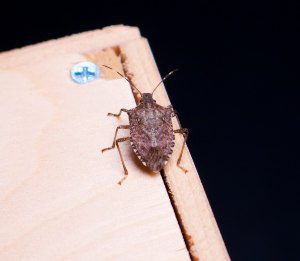GOT SPIDERS? THEN YOUR HOME IS PROVIDING SPIDER FOOD
By Chris Williams on November 12, 2019.
Shouldn’t I be done with cleaning spider webs out of my house by now? There are hardly any insects outside anymore to sneak inside and I know I don’t have any insect infestations in my house, so why aren’t the spiders dying off?
L.C., Salem, MA
Fortunately for pest control companies everywhere, there are a number of domestic household pests, including spiders, that know no season. Living in the controlled environment indoors, they can survive and reproduce year-round as long as food is available (see What Happens to Indoor Insects in Winter?)
If you see spiders here and there but can’t seem to track them down, below are a few hints to help you find spiders in their hiding places. Yes, spiders do feed on insects and other arthropods so they will be living near a food source. You say you don’t have any bugs in your house now, but check the spider winter food sources below. You might be surprised to discover that you are providing “walking spider food” after all!
HERE’S WHERE TO FIND INDOOR SPIDERS
(1) Look near lights. Look for areas where lights are left on at night, including nightlights in bathrooms, or where outside lights shine through windows. Spiders gravitate to these sites to catch insects that are attracted to the light.
(2) Check dark, secluded places. This may seem like a contradiction to the advice in (1) above, but the same spiders that were actively hunting around lights at night are hiding during the day in dark corners, under furniture, behind molding, or in boxes.
(3) Look down to find spider fecal spots and the remains of insect prey. Wherever spiders are living above, you will find white to gray dried liquid fecal drips below on floors or on other surfaces such as tables, chairs, or equipment.
(4) Look up to find webs or egg sacs – If you find spider droppings, look up for a web or spider that should be above but may be hidden in a crevice. Don’t expect a symmetrical cobweb, most spider webs indoors are a loose tangle of silk. Look also for globular, papery egg sacs in dark corners, behind drapery or objects on the wall, or around window frames.
HERE’S WHAT INDOOR SPIDERS MIGHT BE EATING

Brown Marmorated Stink Bugs are becoming more common “over-wintering pests” in New England homes. Z. Ciras
Yes, this is a little creepy but know that there is plenty of live spider food in any home at any time of year. It’s just less visible in fall and winter!
overwintering insects – fall is when certain outdoor insects look for warm inside places to spend the winter. Some of them, such as lady beetles and seed bugs, can end up hidden and “hibernating” in large numbers in attics or wall voids.
food-infesting insects – pantry pests such as flour beetles and grain moths are often present unseen inside food packages in kitchens and pantries (see Why Do I Have Spiders Indoors in Winter?). When a home has a mouse problem, mice will hoard food in hidden places that can then become infested by food insects. Stored birdseed can also be infested.
potted plant pests and firewood pests – these outdoor plant-feeding or wood-boring bugs make an appearance indoors when plants are brought inside in the fall or when firewood is carried indoors.
Examples of other lurking indoor pests are drain flies in a basement floor drain, clothes moths in an unused closet, silverfish in a box of old books, or paper wasp queens spending the winter in an attic – all of them doing their own thing, perhaps visible to spiders only.
HERE’S HOW TO GET RID OF INDOOR SPIDERS
A pest control company is your best friend when it comes to spider control. Not only can a professional eliminate spiders and their webs, but most importantly, that pro can get rid of 6-legged spider food. Without a food source, spiders will die off naturally.
Your second best friend is a vacuum with an extender tube and a crevice tool that will reach spiders and their egg sacs in webs near the ceiling, as well as vacuum spiders and egg sacs behind drapes and under tables and chairs. Vacuuming often will help eliminate walking spider food at floor level, too.